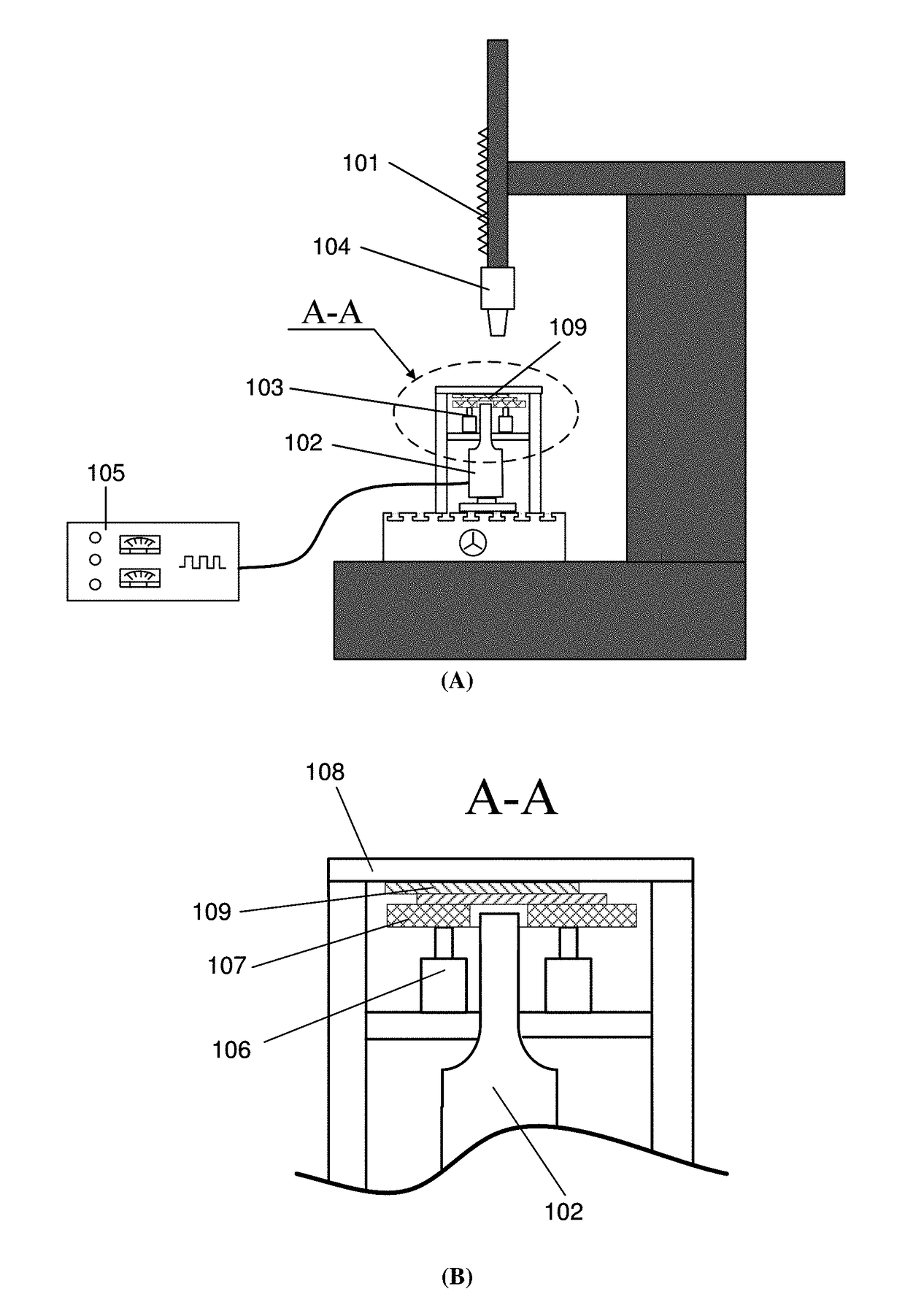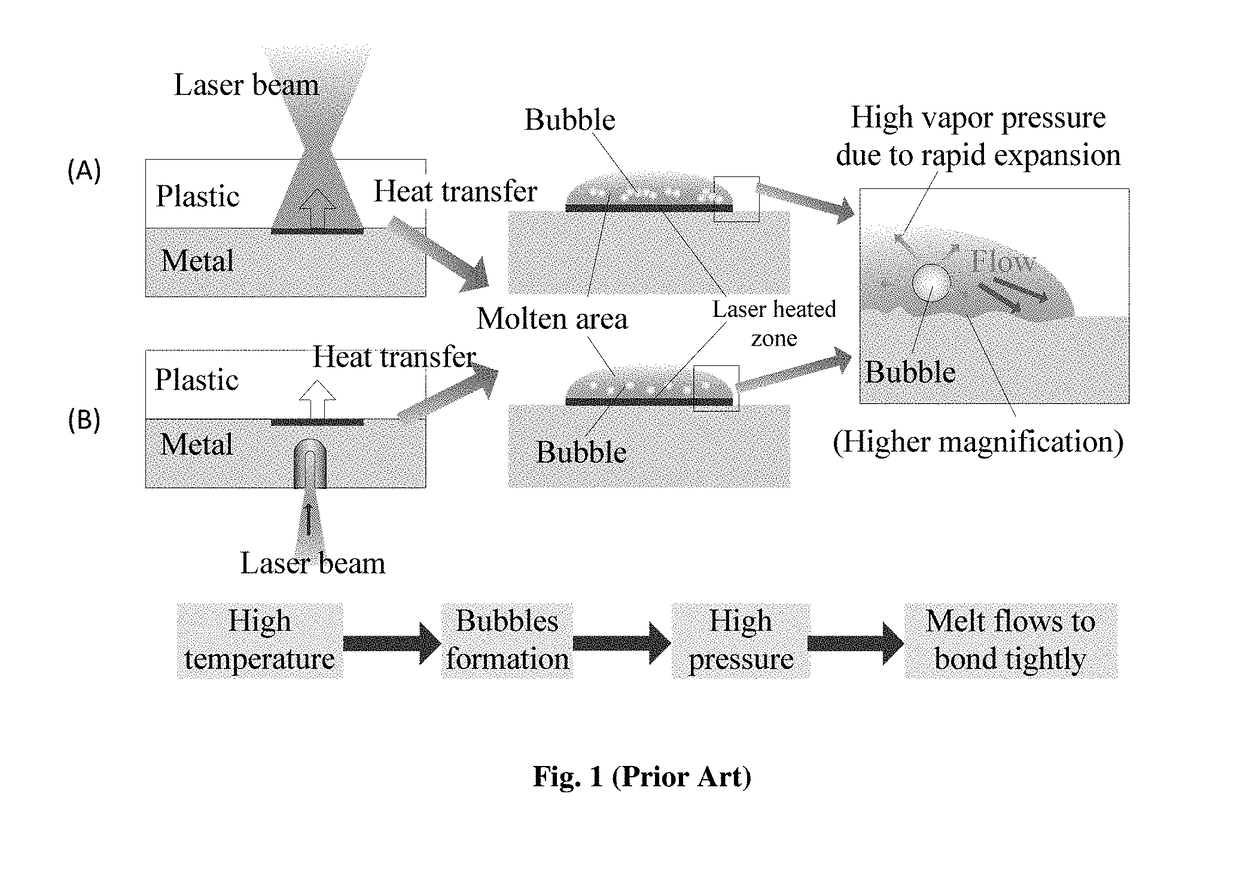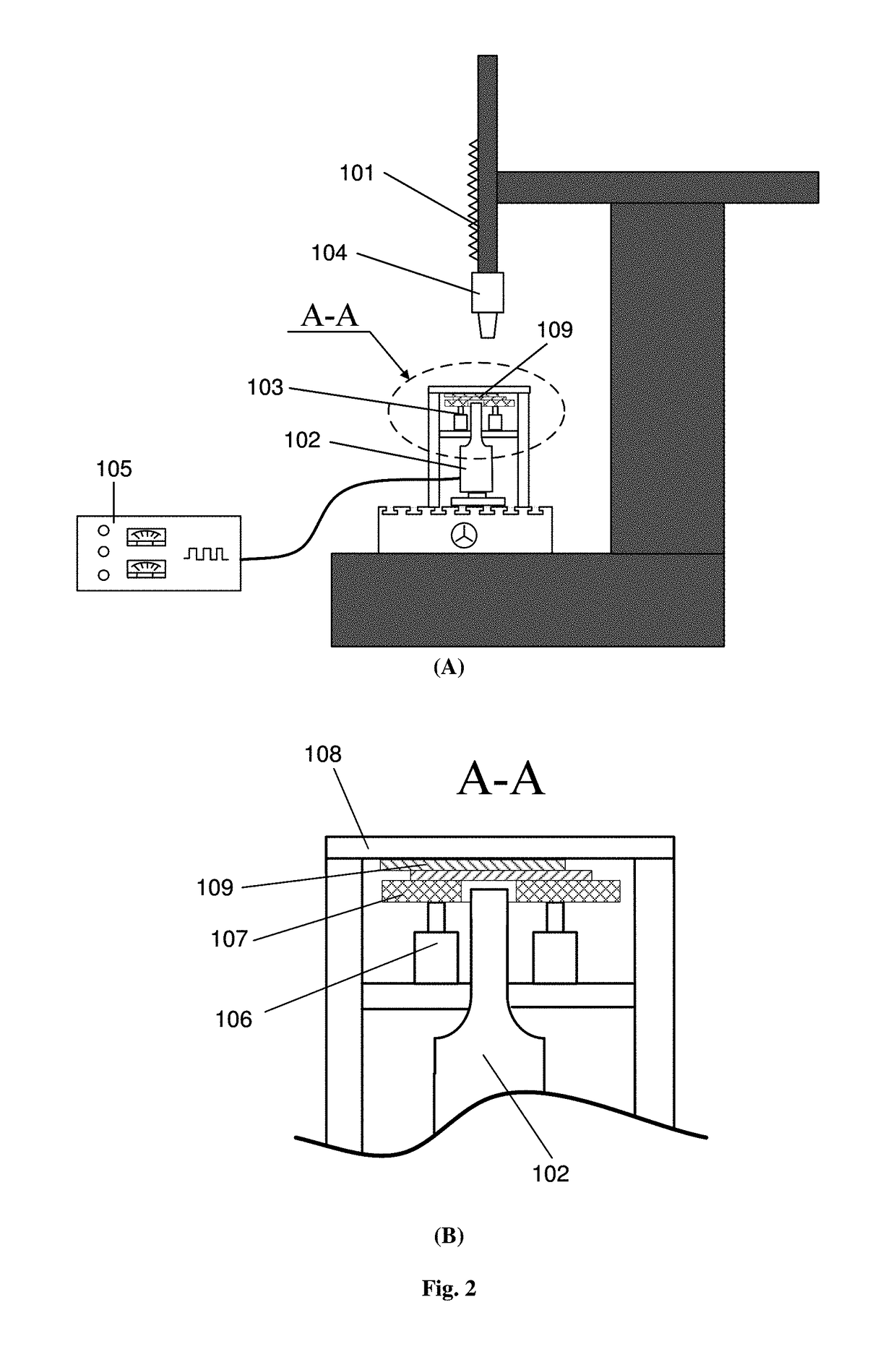Method Of Laser Joining Of Dissimilar Materials With Ultrasonic Aid
a laser joining and dissimilar material technology, applied in laser beam welding apparatus, welding/soldering/cutting articles, manufacturing tools, etc., can solve the problems of difficult joining of plastics to metals using conventional methods, formation of bubbles in molten plastic, and not new, so as to reduce the amount of bubbles or even eliminate the
- Summary
- Abstract
- Description
- Claims
- Application Information
AI Technical Summary
Benefits of technology
Problems solved by technology
Method used
Image
Examples
example 1
[0048]In the present invention, both the LAMP and UAL joining experiments were conducted for a polyethylene terephthalate (PET) / titanium (Ti) pair. Titanium and its alloys are widely applied in aerospace equipment and medical applications. PET is the plastic material to be joined to Ti. It is an important material for medical devices. Its chemical formula is (C10H8O4)n. The Ti (1 mm thick, purity 99.6%) and PET (1 mm thick, amorphous) strips to be joined have the dimensions of 60 mm×25 mm×1 mm (LWT). The joining face of the titanium specimens was polished using emery paper, and all the Ti and PET specimens were cleaned in an ultrasonic bath for 10 minutes in ethanol prior to laser joining.
[0049]UAL joining was performed using a specially designed ultrasonic-aided laser joining system (FIG. 2). The system essentially consists of a 300 W pulsed laser, an ultrasonic vibration device capable of vibrating at a frequency of 28 kHz and a clamping device. The ultrasonic vibration device con...
example 2
[0059]Some more experiments using low laser power have been performed. The idea is to prevent vaporization of the plastic and the formation of bubbles in the joint at the first place for both the LAMP and UAL methods, and to prove that for such conditions, the present invention is also better than (in terms of failure load) the conventional LAMP method. The UAL consists of a laser source (which in this example is a 300 W pulsed laser), an ultrasonic vibration device (which is capable of vibrating at a frequency of 28 kHz) and an apparatus clamping device. The joining parameters used in the experiment are given in Table 2.
TABLE 2Joining ParametersLaser beam focal length25mmLaser power30 WLaser pulse frequency15 HzPulse duration8msSpot size of the laser beamØ 2.5 mmUltrasonic vibration frequency28 kHzUltrasonic vibration amplitude2 μ-6 μm
[0060]To perform UAL joining, the plastic sheet is placed on top of the metal sheet. The laser beam passes through a quartz plate and a plastic sheet...
PUM
| Property | Measurement | Unit |
|---|---|---|
| average power | aaaaa | aaaaa |
| pulse frequency | aaaaa | aaaaa |
| frequency | aaaaa | aaaaa |
Abstract
Description
Claims
Application Information
 Login to View More
Login to View More - R&D
- Intellectual Property
- Life Sciences
- Materials
- Tech Scout
- Unparalleled Data Quality
- Higher Quality Content
- 60% Fewer Hallucinations
Browse by: Latest US Patents, China's latest patents, Technical Efficacy Thesaurus, Application Domain, Technology Topic, Popular Technical Reports.
© 2025 PatSnap. All rights reserved.Legal|Privacy policy|Modern Slavery Act Transparency Statement|Sitemap|About US| Contact US: help@patsnap.com



